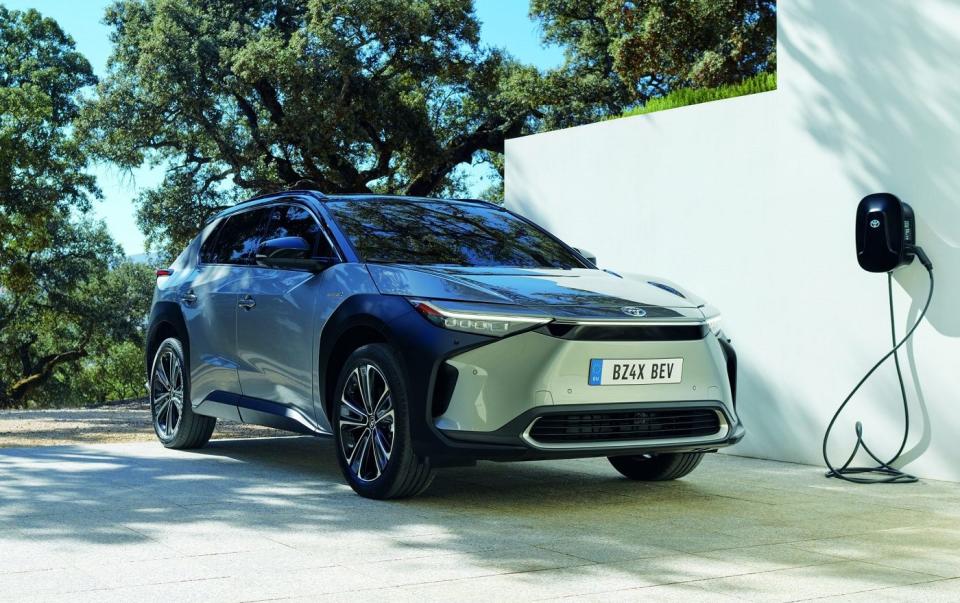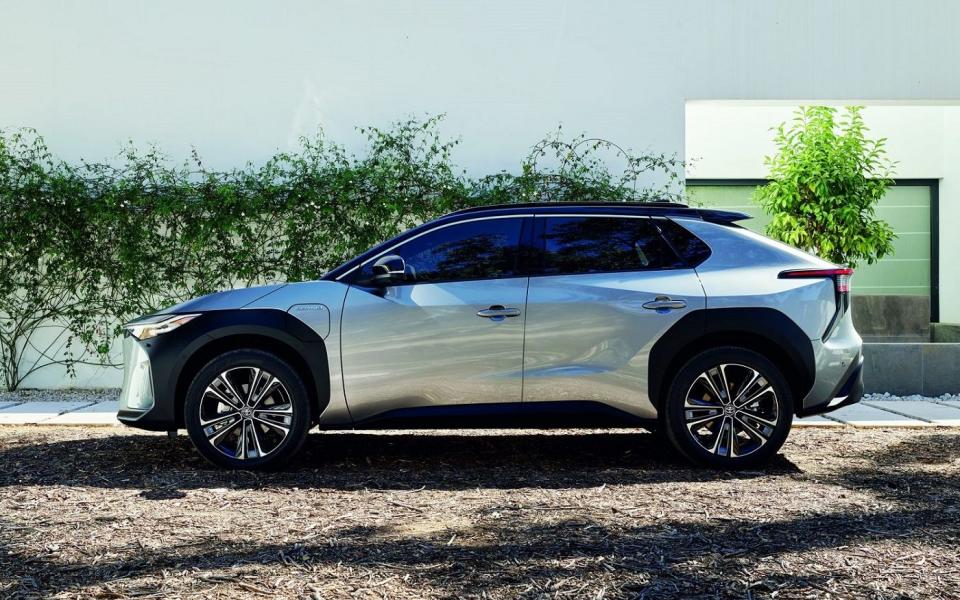Toyota commits to hydrogen as well as battery-electric for next-generation low emissions cars

Toyota has released more details on its low-carbon strategy, which includes a new battery-electric drivetrain/chassis platform, plus a brand-new hydrogen fuel cell, but it is also warning European and the UK governments that a more numerous and better-regulated battery recharging structure will be required if they are to realise the low-carbon benefits of battery technology.
Matt Harrison, chief executive of Toyota Motor Europe, confirmed that in meetings with the UK Government the motor industry had called for “the enablers” for battery-electric vehicles (BEVs) to be put in place.
He acknowledges that the Government’s plans for a recharging infrastructure of three million chargers is a valuable step, with a huge amount of money and focus behind it, but goes further saying: “It might need to be nearer to four million.
“The charging structure needs to be there, with much clearer guidelines to truly meet the needs and provide reassurance for customers who are thinking about an electric vehicle,” he said, suggesting that Government standards and regulation might have to be imposed on the charging industry which, as we have observed in the past, is something of a wild west at present.

He also defends Toyota’s projected battery-car model mix, which appears lower than rivals, saying that the company’s model line-up favours small cars where the extra cost and bulk of batteries makes it difficult to build competitive products that people want and can afford to purchase.
Battery technology
Partly as a result of its tendency towards smaller, cheaper cars, Toyota refuses to be tied down to a single, low-carbon technology such as battery-electric propulsion, although it has finally launched its forthcoming battery architecture family under the bZ4X, a family SUV, which is due on sale next year.
While the bZ4X is actually Toyota’s fifth pure-electric car, it debuts a new breed of flexible but similar battery drivetrains and platforms.
In a paper given in Japan, Masahiko Maeda, Toyota’s chief technology officer, admits that the metallurgy of the cathode and anode are key components to a long service life, but careful temperature control and manufacturing accuracy are also important. He also says that Toyota has had solid-state battery technology on test on Japanese roads for over a year, and that once it has overcome the service-life issues, it intends to put it into production first in hybrid cars (HEVs).

“With HEVs, which have smaller batteries and a development process with which Toyota is familiar,” he writes, “would allow solid-state batteries to be introduced to the market faster, as well as enable improvement of the manufacturing technology for them.”
The company intends to invest some 1.5 trillion yen (about £10 billion) in battery technology by 2030 introducing up to 70 new battery production lines, but Maeda also cautions not to write off hybrid cars as a way of reducing CO2 emissions, they can still have a significant effect.
“According to our calculations, the CO2 reduction effect of three HEVs is almost equal to that of one BEV,” he writes. “At the moment, because we can provide HEVs at a comparatively affordable price, in places where the use of renewable energy is not yet abundant at the moment, electrification using HEVs is [still] among the effective ways of reducing CO2 emissions.”
The new bZ4X family EV
The new battery Toyota SUV follows industry practice in having a long wheelbase with short overhangs to accommodate a 71.4kWh lithium-ion battery pack between the wheels. It’s quite large for this size of vehicle (Renault’s new Mégane E-Tech uses a 60kWh unit) but Toyota refuses to divulge the exact details of the battery’s chemistry, or its anode and cathode materials.
Instead, it says the platform is flexible enough to accommodate new battery chemistries as they become available.

Running on 20-inch wheels, the bZ4X will have a choice of two power outputs, 201bhp with rear-wheel drive and 215bhp with four-wheel drive, along with a range of up to 280 miles with a 30-minute recharge to 80 per cent state of charge possible on a 150kW DC charger.
Toyota claims its experience in building more than 18 million petrol/electric hybrid cars over the last quarter century will enable it to engineer a pure BEV with great durability and it has backed that up with an unusual promise, guaranteeing that the bZ4X will maintain 90 per cent of its charge capacity over a decade and/or 62,000 miles - most car makers only guarantee 70 per cent of charge capacity for between seven or eight years. The proviso for Toyota owners is that you have to have the car inspected annually at a Toyota dealership.
To get round the problems of winter use, where valuable battery power is used to heat the interior, which ruins its driving range, the new car will use a heat pump to more efficiently heat the cabin, along with thermal insulation to retain that heat.
Infra-red heating
In addition, however, the bZ4X has a new infra-red radiant heating system, which warms front-seat passengers using a heat panel in the lower dashboard. The idea of using such electromagnetic panels is that they heat the passengers without wasting energy heating the air. It’s a technology which has been trialled by many car makers, including BMW as far back as 2015.
As Gill Pratt, chief executive of the Toyota Research Institute, explains: “It’s not the temperature of the air that determines how warm the occupants feel, it’s the temperature of their skin.” He uses the example of the frozen-food aisle in a supermarket, where the air temperature is the same as that in the rest of the supermarket, but the radiant temperature of the food is making shoppers feel chilly as it lowers the temperature of their skin.

“Radiant heating is used in many European office buildings,” he says, “and it will make you feel more comfortable in a BEV.” He does admit, however, that his company needs to do more about the heating issue and doesn’t discount the idea of thermally insulated glass in future.
Not just batteries
Hydrogen continues to be a key part of Toyota’s strategy to reduce emissions of carbon dioxide and the company continues (along with Hyundai/Kia of South Korea) the use of the fuel cell in passenger cars (the Mirai) as well as Toyota’s hydrogen-burning internal combustion engine (ICE) used in an experimental race-car project.
The company announced a new second-generation hydrogen-fuelled fuel cell, which goes into limited production at the company’s research and development centre in Zaventem, Belgium. The new cell is claimed to have a power density 54 per cent better than its predecessor and have almost double the power to-weight ratio. Partly as a result, it is 25 per cent lighter with similar reductions in volume, along with weight and size improvements in the air compressor, which forces air into the cell to combine with the hydrogen fuel.

Toyota plans to build the new cell in two sizes, one rectangular and one as a cube to aid the fitment into a variety of applications including trucks, buses, rail and possibly maritime as well as cars.
“We’ve had to set up a dedicated fuel-cell business unit,” says Harrison, who says the company is also looking at static electricity generation markets, which might be particularly significant given the gales lashing the UK last weekend.
“Initially it will be low volume, no more than 600 units per year,” he says, “but at some point, we will have to move it to one of our existing manufacturing facilities. There’s been some interest in the UK, Sir Anthony Bamford [of JCB] already has a Mirai.”
For new and used buying guides, tips and expert advice, visit our Advice section, or sign up to our newsletter here
To talk all things motoring with the Telegraph Cars team join the Telegraph Motoring Club Facebook group here

 Yahoo News
Yahoo News 